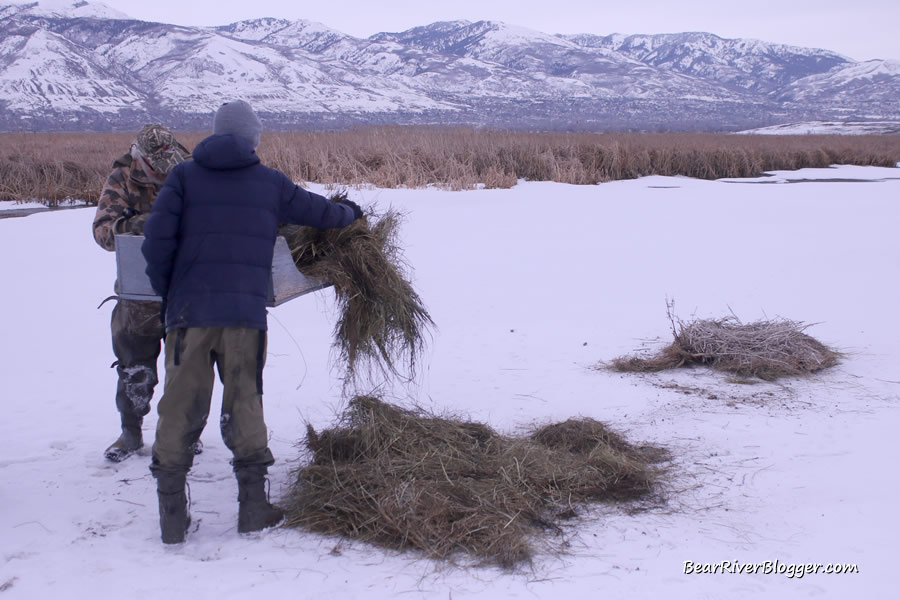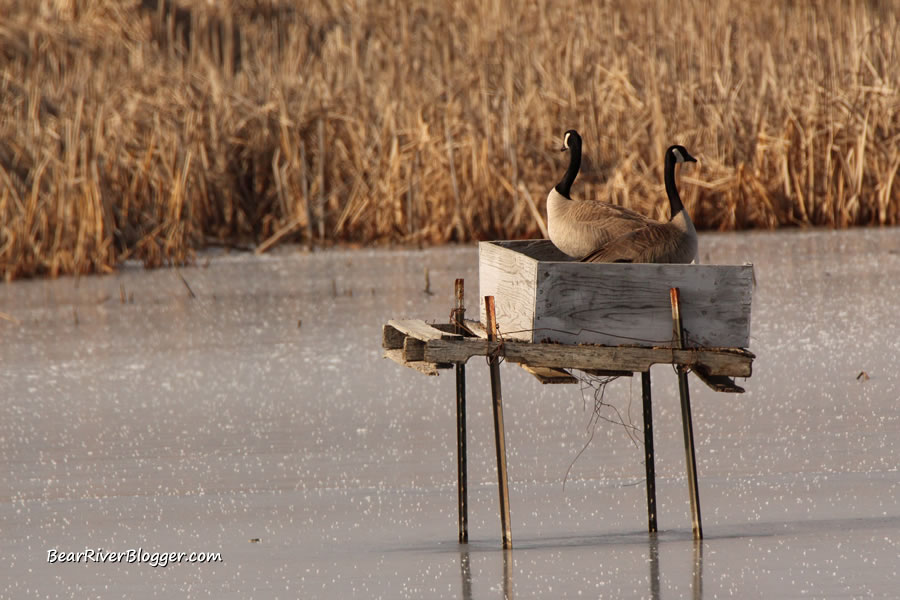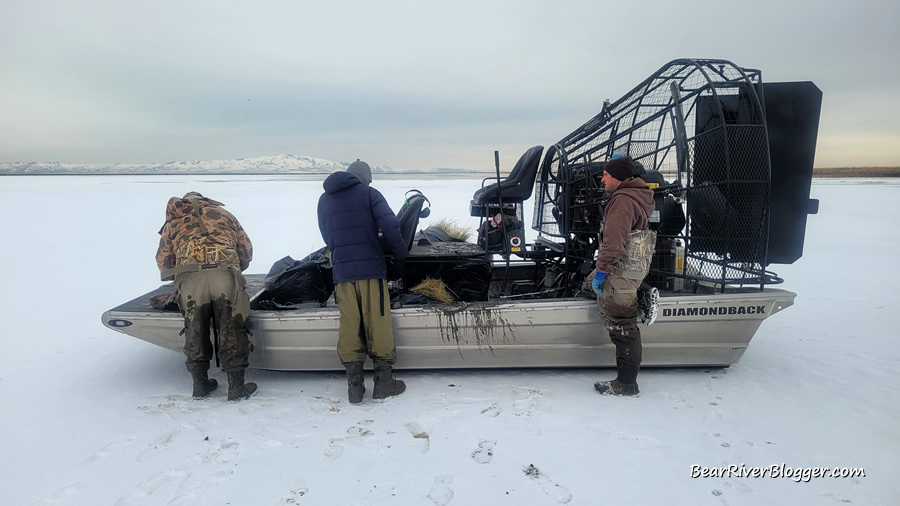When I woke up and left the house a lot earlier than normal this past Saturday morning I certainly had no idea what I had gotten myself into exactly.
All I knew for sure was somehow, someway I was going to be riding in an airboat out in the frozen wetlands of Farmington Bay.
Other than that, everything else was a mystery to me, one as an avid birdwatcher I was excited to unfold.
The clouds were hanging low, there was a slight breeze, and it was a little bit on the chilly side I will admit but overall not a bad late winter’s day to be outdoors enjoying nature I’d say by any means.
I’m definitely not what you could describe as an “early riser” to be totally truthful here unless, however, there’s a darn good excuse attached that hopefully includes birds of some kind.
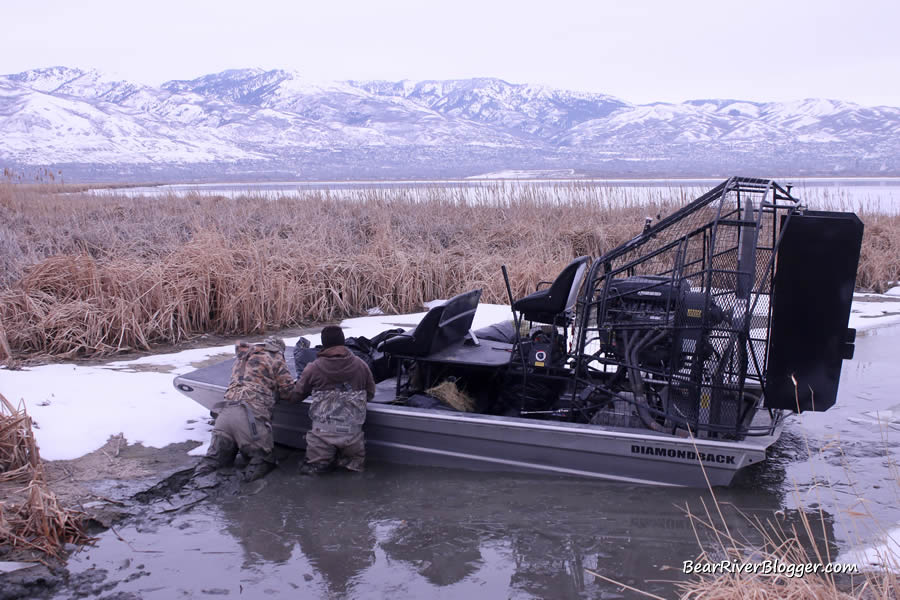
But on this particular morning, there was an excuse, a very good excuse mind you that did include birds.
I was headed to Farmington Bay WMA to cover a most interesting wildlife conservation project, one that I’ve wanted to write about for years but the timing just never seemed to work out until now.
(Do you like podcasts? Great News because now you can follow Bear River Blogger on Spotify for our newly created podcast channel about our excursions in nature.)
Each year, typically during the last part of February and into early March, dozens of volunteers descend upon Farmington Bay to assist DWR Staff in freshening up the artificial goose nesting platforms for the upcoming breeding season.
It’s quite a daunting task for Jason Jones, Manager at Farmington Bay, and his assistant manager David England to try and refurbish over 100 nesting platforms by themselves before the Canada goose breeding season begins.
Simply put, Canada geese are ground-nesting birds, leaving their eggs quite vulnerable to terrestrial predators such as skunks, foxes, coyotes, and raccoons.
So to help combat the relentless predation on Canada geese nests and increase goose production, the Utah Division of Wildlife Resources has implemented the use of artificial nesting platforms at several of their waterfowl management areas.
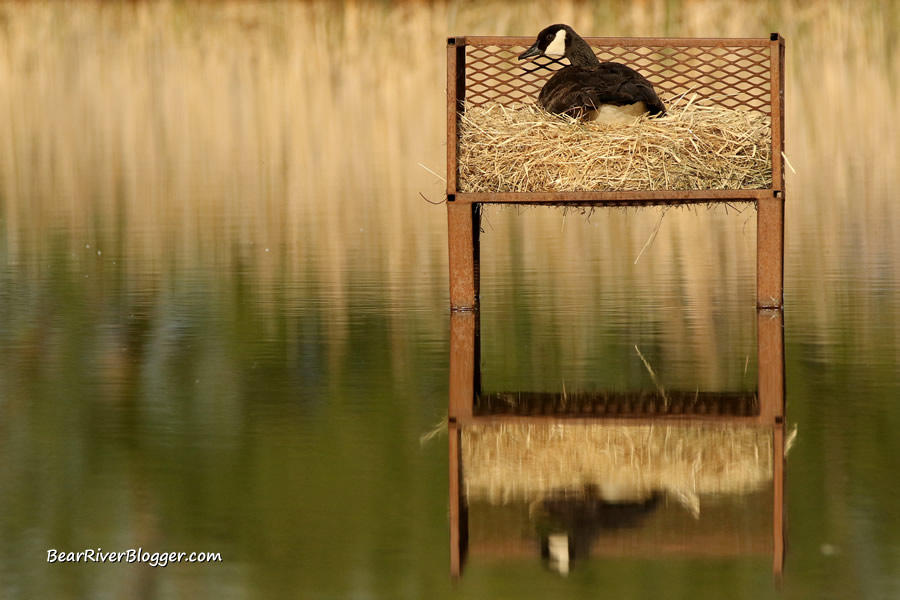
Farmington Bay is, in fact, one of those areas that utilize over 100 artificial goose nesting platforms to get their nests up off the ground and in a more open water location to help deter such land-based predation on the eggs.
But if you’ve ever tried to traverse a wetland by foot, you know just how hard it is and why volunteers and their airboats from the Utah Airboat Association are greatly needed and appreciated for this large project each year.
In fact, numerous volunteers from several hunting organizations take part in this conservation project each winter at Farmington Bay and are greatly appreciated, including the Utah Airboat Association, Wasatch Wigeons, Dedicated Hunters, as well as one young volunteer this year from the Eccles Wildlife Education Center.
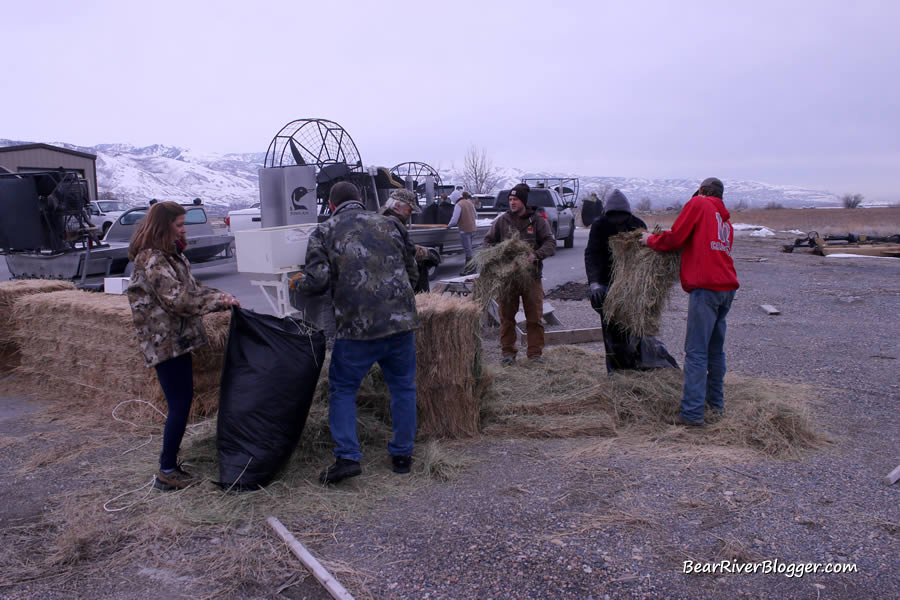
After a brief orientation about the project, volunteers stuffed large plastic bags with hay to be used as fresh nesting material and loaded them on the awaiting airboats before heading out to their assigned impoundments to commence the work of removing and replacing nesting materials at each platform.
This was my first time on an airboat and I can see why these unique boats are both greatly appreciated and most definitely needed for this project.
There would have literally been no way for us to reach any of the nesting platforms our crew worked on by foot.
Trust me, I’m no stranger to wetlands as I have had my fair share of time out in these swamps over the years and these nesting platforms were well out of range for foot traffic to say the least.
And with very low water levels and a lot of prevailing ice on much of the impoundments, outboard motor boats were of no use either so the only feasible mode of transportation was, in fact, airboats.
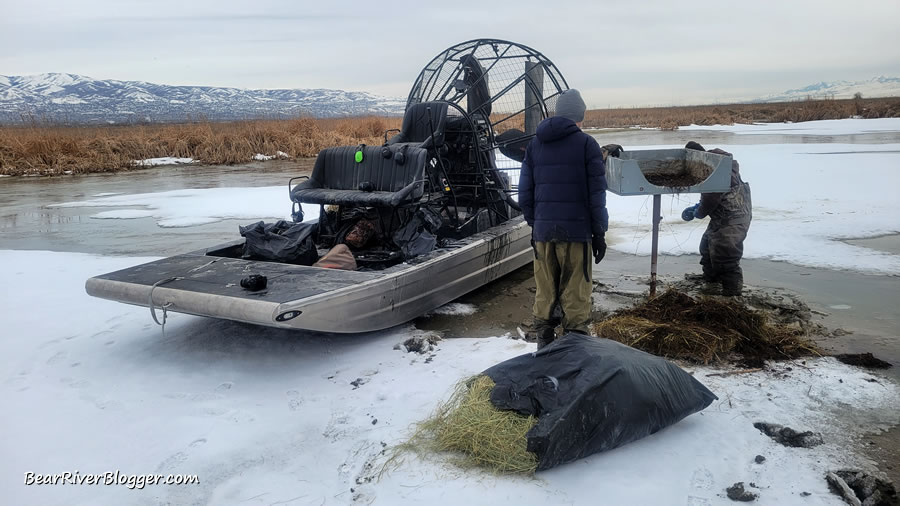
Interestingly enough, our particular destination was the exact same location where I was able to assist in efforts to capture and tag pelicans for a USU Ph.D. research project 2 years ago, a spot where I know from personal experience the mud is knee high, if not higher in places, and could easily pull your boots off if you’re not careful.
But luckily the airboats glided pretty effortlessly over the frozen mud and just a few minutes after launching we were already at the first nest to remove and replace the aged nesting material.
Volunteers are what make projects like this work and it was encouraging to see so many volunteers from the above mentioned organizations come and freely give their time to help nature out a bit like this.
It was quite interesting to learn some of last year’s nesting platforms were taken over and used by great blue herons instead of Canada geese from the nesting material left behind on the platform.
Great blue herons are quite common at Farmington Bay year-round with many pairs nesting at the long-time artificial rookery each spring.
In fact, the nearby great blue heron rookery has typically been full in previous years, giving a reason why a few herons opted to go rogue and apparently decided to take over some of the goose nesting platforms for themselves.
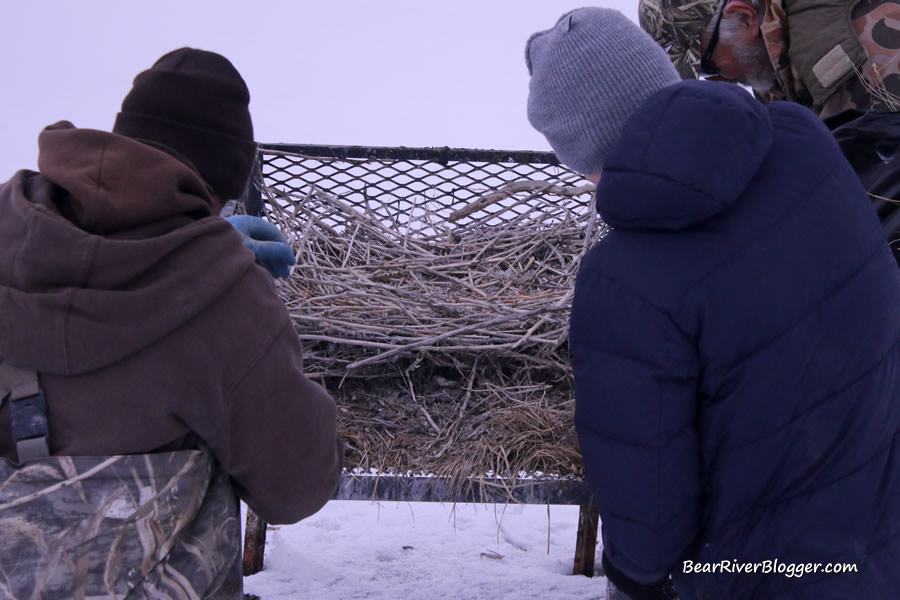
But hopefully, by doubling the heron nesting capacity this past winter on the rookery, going from 18 to 36 nesting platforms, fewer herons might be enticed to push their way onto the goose platforms thus allowing the Canada geese to use them as desired by DWR staff.
Only time will tell but being an avid birdwatcher myself, I was intrigued by how the great blue herons took charge of some of the nesting platforms built for Canada geese.
I do hope, however, the great blue herons will return to the expanded heron rookery this breeding season and leave the goose platforms alone, allowing the geese to nest in a much safer location than on an old muskrat den or something of the like.
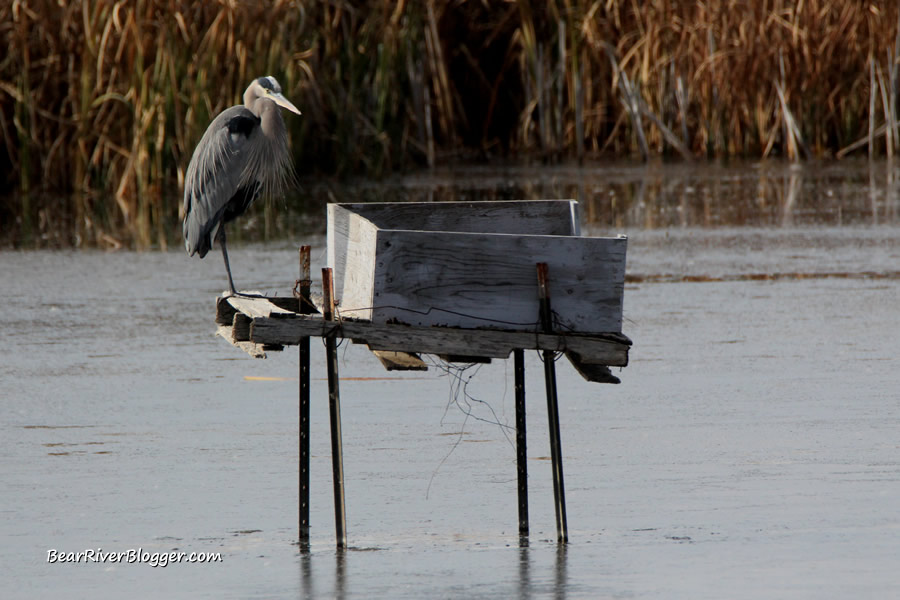
All in all, it was a most enjoyable and enlightening day out in the wetlands and if you are interested in participating in projects like this at Farmington Bay itself or at their education center, contact the Eccles Wildlife Education Center to get more information about volunteering at Farmington Bay.
It’s quite a thrill to get out and participate in as well as write about nature-related projects like this and as such, if you are a birdwatcher or just someone who likes nature we offer you to head on over to our subscribe page and sign up for email notifications for future blog posts like this one.
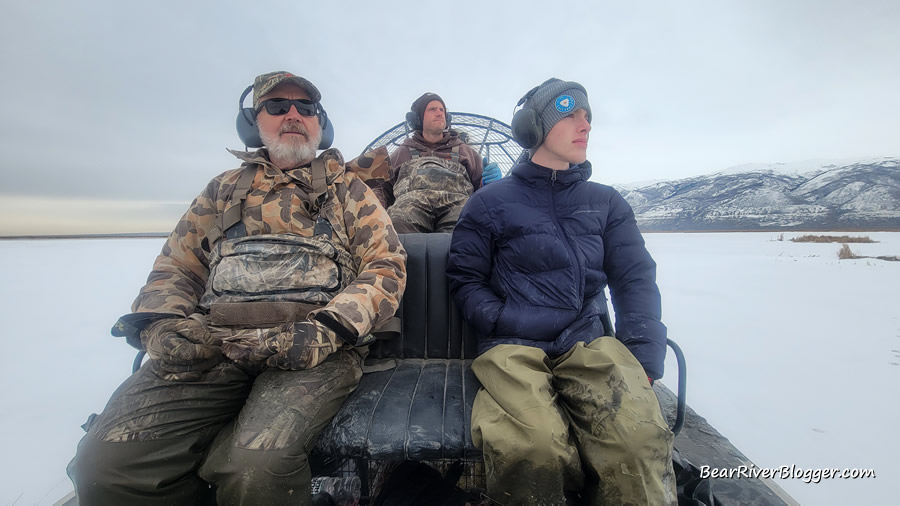
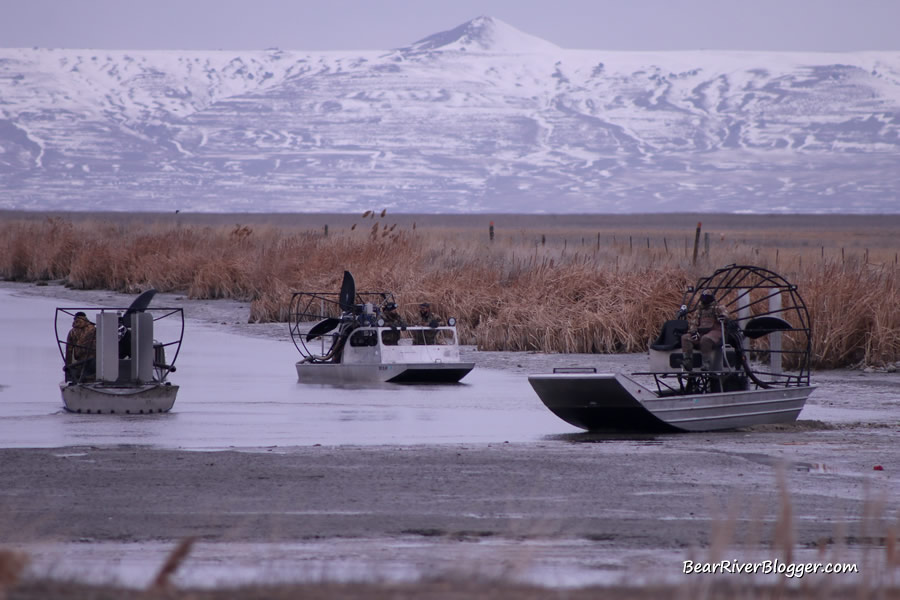

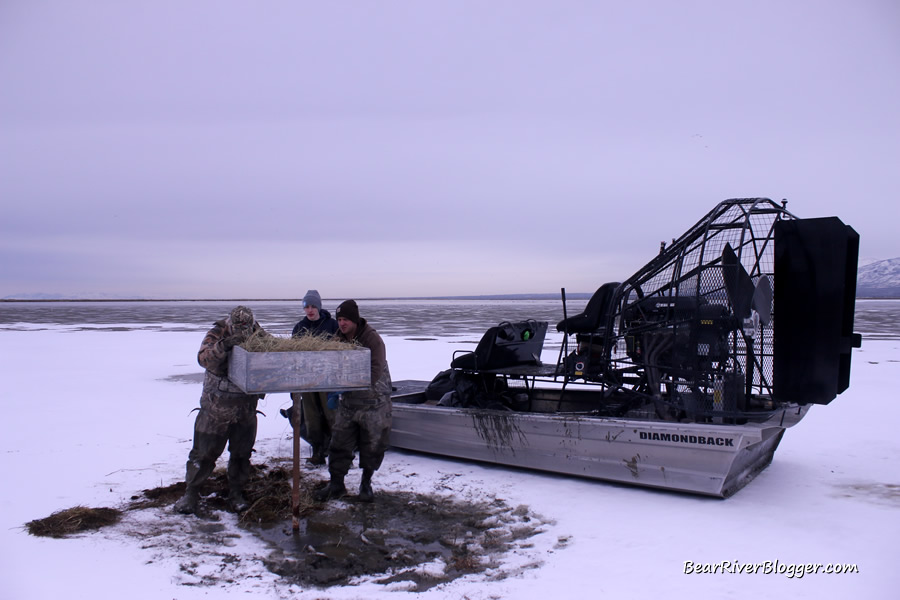
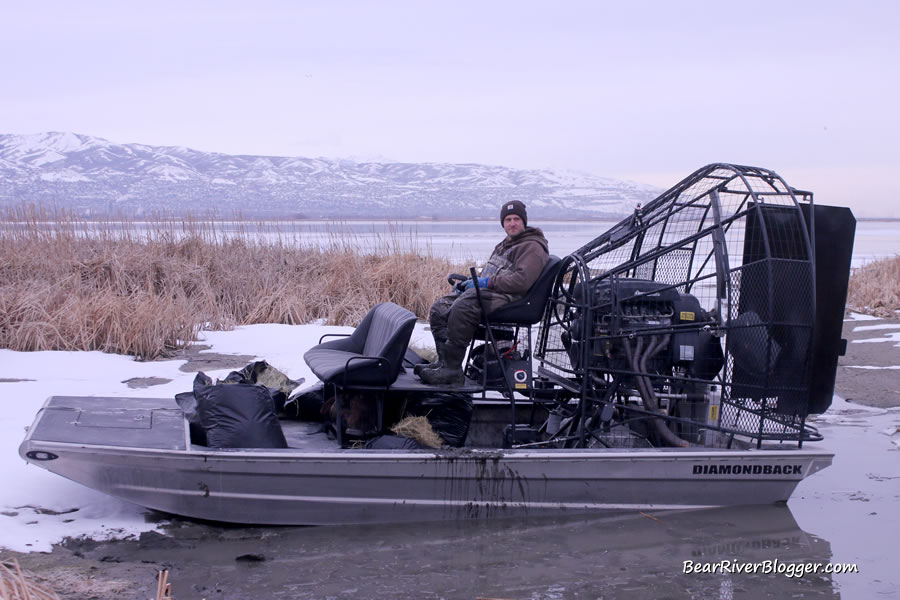
(For short nature clips like this one and interesting stories about the natural world around us, check out our Bear River Blogger channel on YouTube for videos and updates from our travels while out in nature.)

